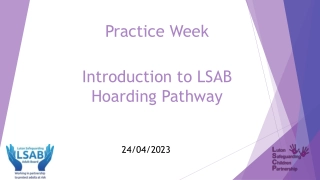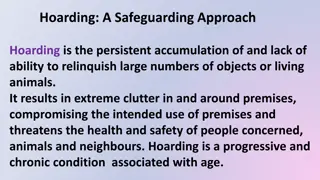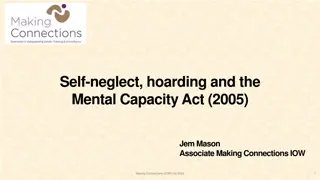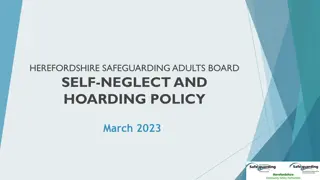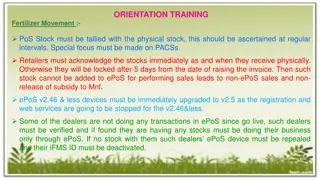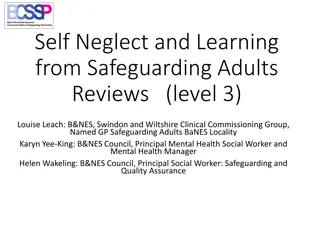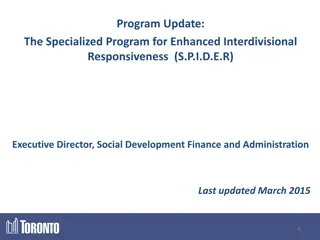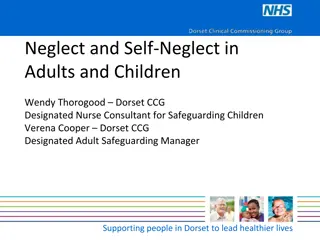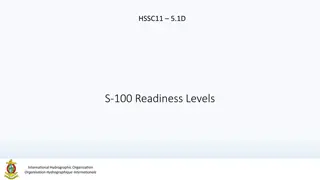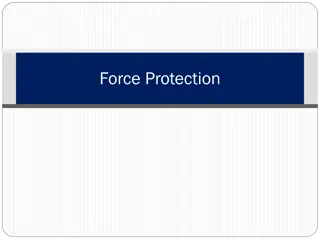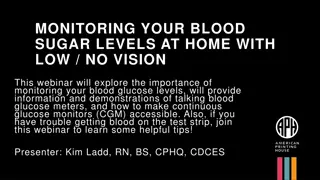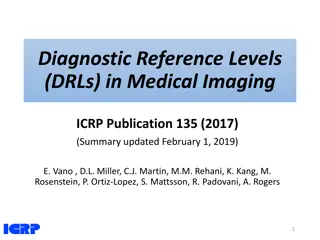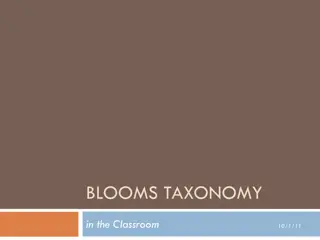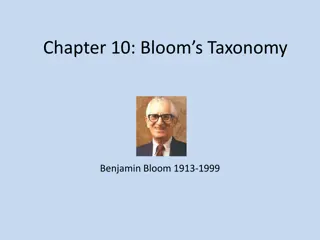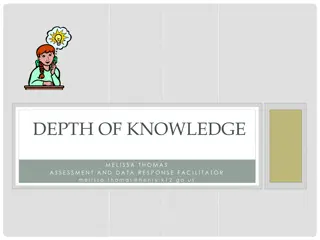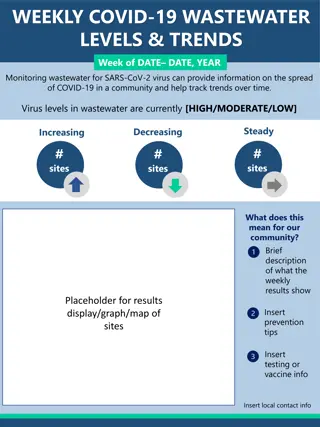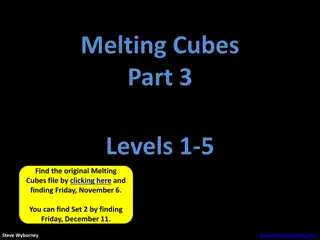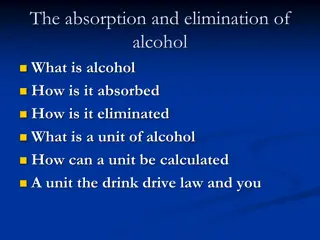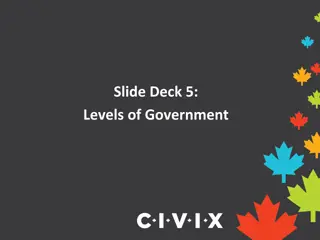
What are the 5 Levels of Hoarding?
Explore the five levels of hoarding and learn how to identify and address each stage. Get insights and practical tips to help manage hoarding behavior.
Download Presentation

Please find below an Image/Link to download the presentation.
The content on the website is provided AS IS for your information and personal use only. It may not be sold, licensed, or shared on other websites without obtaining consent from the author. Download presentation by click this link. If you encounter any issues during the download, it is possible that the publisher has removed the file from their server.
E N D
Presentation Transcript
What are the 5 Levels of Hoarding? Hoarding is a complex psychological disorder characterized by an inability to discard possessions, which culminates in excessive accumulation and clutter. This condition can significantly impact a person s quality of life, affecting their physical, emotional, and social well-being. To better understand the varying degrees of hoarding severity, experts use a standardized scale ranging from Level 1 to Level 5. Each level represents a different stage of hoarding, with increasing severity and associated risks. 5 Levels of Hoarding Level 1: Minimal Clutter In homes that fall under Level 1, all living areas are easily accessible, and pathways and exits remain unblocked. This accessibility not only contributes to the overall organization but also enhances safety, particularly in emergencies. Plumbing and electrical systems are in good working condition, with any issues being minor and readily serviceable. This level of maintenance indicates a proactive approach to home upkeep, which prevents minor problems from escalating into significant concerns. Also:
Proper air circulation helps prevent issues such as mold growth There is an appropriate number of pets, which determines that animal care does not overwhelm the household or contribute to clutter Read More Articles: The Impact of Sanson D'abbeville on Modern Cartography Level 2: Mild Clutter Mild Clutter represents a home that, while not perfectly tidy, remains functional and safe. This level of clutter is characterized by a few more items scattered around, but overall, the living spaces are still accessible, and all exits remain unobstructed. This ensures that movement throughout the home is unhindered, thus maintaining an essential aspect of: Safety Convenience In homes with mild clutter, there are no significant plumbing or electrical problems. Although the home may appear slightly messy, it still boasts sufficient ventilation. One might need to step over a few possessions scattered on the floor, but all appliances and fixtures remain usable and within easy reach. This accessibility of household items: Supports the functionality of the home Guarantees that daily activities can proceed without major inconveniences Level 3: Moderate Clutter At this level, the environment becomes increasingly unsafe and unsanitary, often necessitating Transition Life Style professional intervention to restore livable conditions. Areas of the home are difficult to navigate, and at least one exit is blocked. In addition, the presence of pet feces inside the home further contributes to the unsanitary conditions, along with overflowing garbage that exacerbates the clutter and health risks.
One or more major appliances are typically out of order, complicating daily tasks and reducing the functionality of essential household areas like the kitchen and laundry room. Common areas such as the kitchen, bedroom, and living room may no longer serve their intended purposes. Plus, the growth of mold: Indicates poor maintenance and inadequate cleaning Creates a hazardous living environment Level 4: Severe Clutter In such environments, only a single narrow trail might exist for moving from one room to another, which significantly increases the risk of: Trips Falls Other injuries This level of clutter not only endangers physical health but also contributes to severe psychological distress and social isolation for the residents. One of the major characteristics of severe clutter is the presence of mildew on walls and other surfaces, which can cause: Respiratory problems Chronic health issues Fire hazards are prevalent because piles of clutter obstruct access to fire extinguishers, if any are present, and create flammable conditions. Furthermore, hallways become so narrowed by the clutter that navigating through them is difficult and dangerous. Stairways are often blocked entirely, making upper levels of the home inaccessible. Professional help is essential to address the complex challenges posed by severe clutter and make sure that the home is made safe and habitable once again. Level 5: Extreme Clutter Extreme Clutter represents the most severe stage of hoarding, where the home becomes a prison for its occupants. In homes suffering from extreme clutter, mold and mildew are abundant. The environment is rife with fire hazards due to the:
Extensive accumulation of flammable materials Blocked access to fire safety equipment Rampant animal waste and human feces are present, often due to unmaintained plumbing systems. These conditions lead to infestations of bed bugs, rodents, and other pests, exacerbating the unsanitary state of the home. Heaps of clutter cover every surface, and moving them aside is often necessary to access different areas of the home. Residents may need to climb or crawl to navigate from one side of the house to the other. Besides, multiple appliances are typically out of order, and there is often no running water. A coordinated approach involving mental health professionals, social services, and specialized cleaning teams is necessary to address the hoarding and ensure the safety of the individual. Read More Articles: Top 10 Most Iconic Birds Featured in 'The Birds of America' Addressing Hoarding: Steps and Strategies 1. Early Intervention Early intervention is key to preventing the escalation of hoarding behaviors. Friends, family members, and healthcare providers should be aware of the signs of hoarding and encourage individuals to seek help if they notice increasing clutter and difficulty discarding items. 2. Professional Help Help from therapists and counselors is crucial for addressing the underlying psychological issues associated with hoarding. Cognitive-behavioral therapy (CBT) is an effective treatment that helps individuals understand the reasons behind their hoarding behaviors and develop healthier habits.
3. Support Groups Support groups provide a safe and understanding environment where individuals with hoarding disorder can share their experiences and receive encouragement from others facing similar challenges. These groups can be an invaluable resource for emotional support and practical advice. 4. Specialized Cleaning Services Specialized cleaning services experienced in dealing with hoarding situations can help restore a safe and livable environment. These experts understand the sensitivity of the situation and work compassionately with individuals to declutter their homes. 5. Ongoing Support Hoarding disorder is a chronic condition that requires ongoing support and management. Regular check-ins with mental health professionals, continuous participation in support groups, and maintenance of newly developed habits are essential for long-term success. In A Nutshell Understanding the five levels of hoarding is important for recognizing the severity of the condition and implementing appropriate interventions. Early recognition and intervention can minimize the likelihood of the progression of hoarding and improve the quality of life for individuals affected by this condition. If you or someone you know is struggling with hoarding, seeking help is crucial. With the right support, individuals can manage their hoarding behavior and regain control over their living spaces. Need transition life style professionals to uplift your surroundings and personal life? Get in touch with us at LifeCycle Transitions and let us help you get rid of hoarding clutter as well as your emotional challenges! Site Article: What are the 5 Levels of Hoarding?

